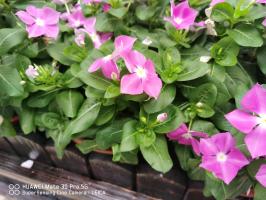Introduction
Photosynthesis is the process by which plants convert light energy into chemical energy that they use to power their biological functions. But where does photosynthesis occur in a plant? This article explores the answer to this question.
The Chloroplasts
Photosynthesis occurs in a plant's chloroplasts. Chloroplasts are specialized plant cell organelles that contain pigments called chlorophylls. These pigments are what give plants their green color. Chloroplasts are responsible for capturing light energy and converting it into chemical energy through a series of complex biochemical reactions.
The Chloroplast Structure
The chloroplast is a complex structure consisting of several components that work together to carry out photosynthesis. The thylakoids are the flattened membranous sacs within the chloroplast that contain the pigments needed to capture light energy. The stroma is the fluid that surrounds the thylakoids and contains enzymes responsible for the biochemical reactions that occur during photosynthesis.
The Photosynthetic Process
The photosynthetic process can be broken down into two main stages: the light-dependent reactions and the light-independent reactions. The light-dependent reactions occur in the thylakoid membranes of the chloroplasts and involve the capture of light energy by pigments. This energy is then used to produce ATP and NADPH, which are used in the light-independent reactions. The light-independent reactions occur in the stroma of the chloroplasts and involve the conversion of carbon dioxide into glucose, which is then used as energy by the plant.
Conclusion
In conclusion, photosynthesis occurs in a plant's chloroplasts, which are specialized cell organelles responsible for capturing light energy and converting it into chemical energy through a complex series of biochemical reactions. The chloroplast structure consists of several components that work together to carry out the photosynthetic process. Understanding where photosynthesis occurs in a plant is crucial in understanding how plants are able to generate the energy they need to survive.

 how many times do yo...
how many times do yo... how many planted tre...
how many planted tre... how many pine trees ...
how many pine trees ... how many pecan trees...
how many pecan trees... how many plants comp...
how many plants comp... how many plants can ...
how many plants can ... how many plants and ...
how many plants and ... how many pepper plan...
how many pepper plan...































